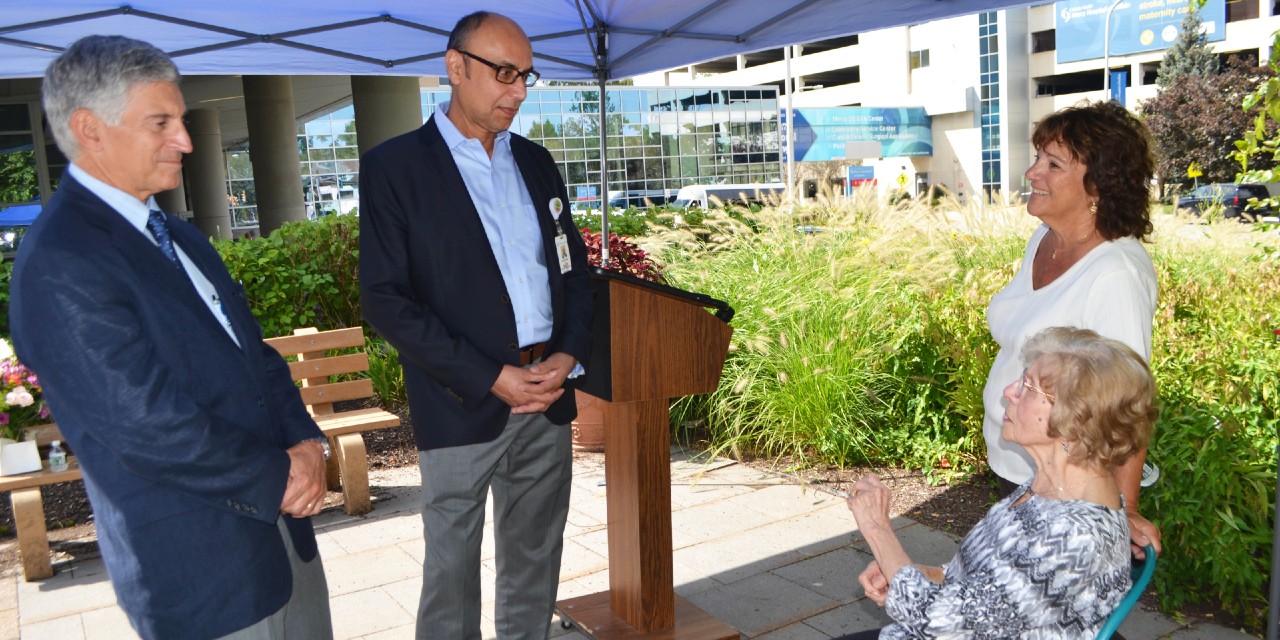99-year-old Recovered Heart Patient Joins In Mercy Hospital’s Milestone 500th TAVR Celebration

Ninety-nine-year-old Joan LaDuca, a grateful former patient, joined doctors, nurses and staff at Mercy Hospital today for a celebration to mark the 500th transcatheter aortic valve replacement (TAVR) procedure performed at the Catholic Health Heart Center. TAVR replaces damaged aortic valves through a tiny catheter which has given many people who may be at too high risk to undergo traditional open heart surgery—especially many older patients—a non-surgical option to treat heart valve disease.
LaDuca underwent the minimally-invasive heart procedure last June to treat aortic stenosis, a narrowing of the heart’s aortic valve which can be a life-threatening condition. Before TAVR, Joan said she was experiencing severe shortness of breath and dizziness but a day after the procedure when she returned home from the hospital, she already felt much better. She feels that “everybody needs to know about this” and that is why she wanted to be a part of the TAVR milestone occasion.
The Success of TAVR at the Heart Center
The hospital began performing TAVR in late 2015 and reached the 500th TAVR mark on September 9. The U.S. Food and Drug Administration (FDA) first approved TAVR in 2011 for use in high risk patients only, and in 2019, expanded use of the procedure for almost all people in need of aortic valve repair. Today, TAVR has become the leading choice for aortic valve replacement compared to the open surgical approach, with nearly 73,000 procedures performed in 2019 at 715 TAVR sites in the United States, according to the Society of Thoracic Surgeons/ American College of Cardiology TVT Registry.
“Just like arteries, the aortic valve can be become clogged with cholesterol buildup,” explains Dr. Joseph Gelormini, interventional cardiologist and member of the TAVR team at the Catholic Health Heart Center at Mercy Hospital of Buffalo. “When the valve does not open properly, it impairs normal heart function, and can lead to heart failure, heart attack, or even sudden death.”
The American Heart Association estimates that about 8 million Americans suffer from heart-valve diseases, with nearly 6 million cases diagnosed annually. Symptoms of aortic stenosis can include shortness of breath, lightheadedness or fainting, and chest pain. “If people are experiencing any of these symptoms, they should talk to their doctor who may order diagnostic testing or refer them to a cardiac specialist,” Dr. Gelormini adds.
Cardiac surgeon Dr. Stephen Downing, another member of the TAVR team at Mercy Hospital, describes the “valve within a valve” procedure. “We thread a small catheter, tipped with a replacement valve, through a blood vessel in the leg or chest and guide it to the heart,” he explains. “Once in place across the existing heart valve, the new valve is expanded, pushing the unhealthy valve aside to take over regulating blood flow in the heart.”
Helping Cardiac Patients Like Never Before
“We are grateful for this breakthrough technology which allows us to help people, many in their 80s or 90s, who we couldn’t help before,” Dr. Downing added. “Recovery is also much faster, usually two or three days, and patients are able to resume normal activities sooner than with open heart surgery. I have had TAVR patients tell me they feel better right away, are steadier on their feet and experience less shortness of breath.”
In addition to Drs. Downing and Gelormini, the Catholic Health Heart Center TAVR team includes cardiothoracic surgeon Harsh Jain, MD, and interventional cardiologist Nadeem Haq, MD.



